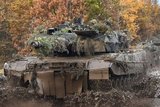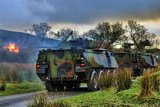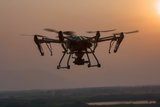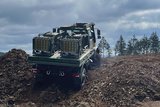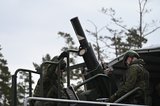Textron Systems: Benefits of MOSA Across Mission Sets (Sponsored)
This article is brought to you by Textron Systems.
As a leader in the development, design and manufacture of defense systems including armored vehicles, unmanned aircraft, specialty marine craft and electronic systems, Textron Systems knows the importance of reliable systems integration with a modular systems approach (MOSA) and architecture.
Developing systems that fail to consider long-term design flexibility is bad for both the customer and the manufacturer. When original equipment manufacturers lock in a customer to using only their products, it adds unnecessary constraints and expense to a project.
Related Articles
Pushing past possible with Textron Systems (sponsored video)
Eurosatory 2022: Textron M5 now available on the international market
By implementing a deliberate, comprehensive design approach, integrators provide the capability to avoid vendor lock, inject new technology from diverse suppliers and rapidly leverage a broad base of investment. This is why Textron Systems embraces MOSA across its multi-domain portfolio. It keeps a system more affordable, adaptable and sustainable throughout the entire lifecycle.
The benefits from MOSA are both programmatic and economic. As a systems integrator, Textron Systems understands the responsibility of looking at a system holistically and from a user experience perspective. If customers want to make their money go farther, then MOSA is the solution.
Whether it is customer – or Textron Systems – provided technology, MOSA enables rapid technology integration and testing, as well as qualification while retaining the resilience of the overall solution – while not compromising growth capacity. MOSA has been fundamental to Textron Systems’ roadmap and a key enabler to move emerging technologies into the field to address a wide range of mission sets.
For example, the RIPSAW® M5 Robotic Vehicle – Medium (RV-M), now available in the international market, has a flat-deck design, which has been manufactured with the highest reliability and capability standards. Developed by Textron Systems and its subsidiary, Howe & Howe, the vehicle’s core platform delivers extreme off-road mobility and incorporates MOSA “all the way to the tracks,” making the system simple to equip for unique mission requirements to support military, civil and commercial applications.
“The M5 RV-M is ready to accept a wide variety of payloads. With its open architecture, we have demonstrated rapid integration of customer provided payloads and operating systems to execute a variety of mission capabilities. Textron Systems has expertise in providing customers with the support necessary to turn their operational needs into a reality,” said David Phillips, Senior Vice President for Land and Sea Systems, Textron Systems.
For the U.S. Army’s Optionally Manned Fighting Vehicle (OMFV) competition, Textron Systems is a member of Team Lynx on the Lynx OMFV, which is also designed to accept a multitude of different payloads. The vehicle will be able to integrate a variety of payloads including loitering munitions, counter unmanned aircraft systems (UAS) technology, among others.
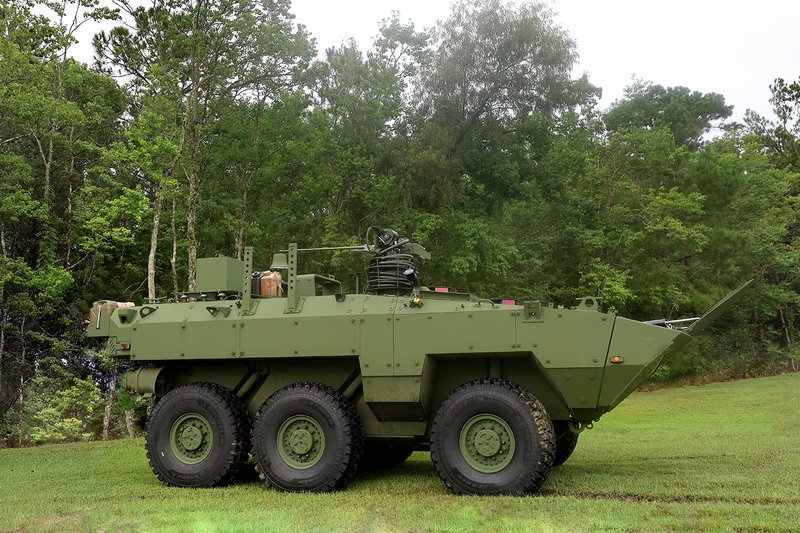
Both of these vehicles represent true next-generation vehicles designed to the highest standards. However, when it comes to all-domain capabilities, the perfect example is Textron Systems’ U.S. Marine Corps’ Advanced Reconnaissance Vehicle (ARV) prototype. Textron Systems’ offering, the Cottonmouth™ ARV, integrates sensors and capabilities across the land, air, sea, electromagnetic and cyber domains.
Textron Systems has expertise in providing customers with the support necessary to turn their operational needs into a reality.— David Phillips, Senior Vice President for Land and Sea Systems, Textron Systems
The vehicle synergizes capabilities into one battle/marine station that delivers unprecedented multi-domain awareness and enables transformative joint warfare concepts. Key to this approach was implementing a digital design environment and model-based systems engineering to provide the Marine Corps with the means to easily and quickly integrate future capabilities using modular interfaces, eventually achieving its goal to realize a family of systems.
Textron Systems also is capable of organically developing air, land, sea and electronic cross-domain capabilities. At Cyber Quest 2022 this past March, the company’s unmanned air and ground systems highlighted Textron Systems’ ability to develop awareness and converge effects across a multi-domain battlespace.
During the event, Textron Systems’ Aerosonde® UAS displayed its ability to employ multi-intelligence payload packages to detect, identify, locate and report electronic threats and seamlessly pass cues to the Howe & Howe RS2-H1 robotic land vehicle without reliance on GPS. By leveraging the Aerosonde® UAS open payload interface and modular mission computer architecture Textron Systems demonstrated an unprecedented speed of integration to employ two new advanced Electronic Warfare payloads as part of the event.

Another example, Textron Systems’ Shadow® RQ-7B V2 Blk III – a tactical UAS – provides advanced capabilities in a battlespace that is continuously evolving. The Shadow has easily configurable payloads, including high-definition electro-optical/infrared systems, communications relay and laser designation.
The Shadow system is backed by Textron Systems’ more than 30 years developing unmanned aircraft systems and has surpassed 1.3 million hours in flight in support of global military operations for U.S. troops and their allies.
With its multi-domain expertise and proven systems integration experience, Textron Systems is at the forefront of all-domain modernization for next-generation vehicles, aircraft, weapons and electronic systems. As a proven systems integrator, the company can deliver purpose-built capabilities with the confidence to adapt with speed, economy and unmatched service and support.
More from Industry Spotlights
-
![De-Risking the Future: Manufacturing Certainty for Unmanned Systems]()
De-Risking the Future: Manufacturing Certainty for Unmanned Systems
How strategic manufacturing partnership solves the industrialisation triad — Scale, Compliance and Cost — for hyper-growth defence tech innovators.
-
![Battlefield mobility, made in the UK]()
Battlefield mobility, made in the UK
How does Britain ensure that we can preserve the lives of our soldiers and allies – now and in the future – with homegrown innovation and resilient domestic manufacturing? At Pearson Engineering, we are proud to be a central part of the answer to this increasingly important question.
-
![Strengthening Baltic defence capabilities]()
Strengthening Baltic defence capabilities
How Latvia is bolstering its territorial defences, industrial capacity and international cooperation with Dynamit Nobel Defence’s SKORPION2 Remote Mining System.
-
![Barco’s vision to trust: from past to future]()
Barco’s vision to trust: from past to future
Barco’s story is one of constant evolution enabling more immersive, reliable, and future-ready training experiences.
-
![How are next-generation ejection seats helping pilots when they need it most?]()
How are next-generation ejection seats helping pilots when they need it most?
The ACES 5 ejection seat from RTX’s Collins Aerospace introduces new, innovative and patented technologies to help save lives.
-
How Patria TREMOS redefines battlefield mobility
The war in Ukraine has made it clear: the battlefield waits for no one. Military operations now take place in fast-paced environments, and speed is not just about the fight itself – it is about the entire ecosystem of warfare.









